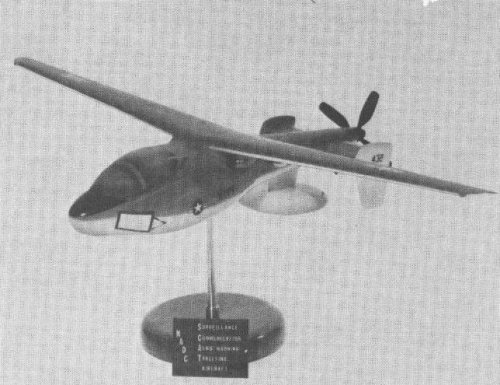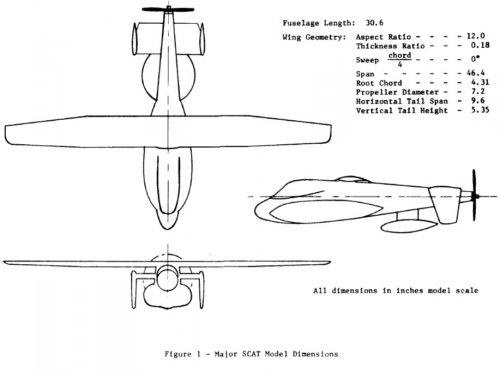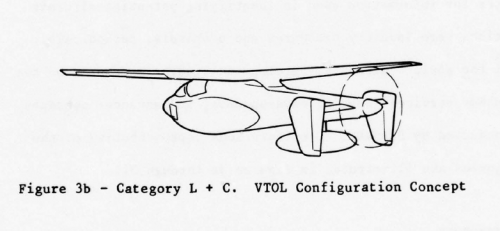- Joined
- 4 May 2008
- Messages
- 2,439
- Reaction score
- 762
Found this in an old AIAA compilation of papers "Evolution of aircraft wing design". The particular paper was by Bob Liebeck (Father of the BWB), and the title was "Design of airfoils for high-lift" (AIAA 80-3034)
therein is briefly described a study called SCAT (Surveillance, Communications, ASMD Warning, and Targeting) for an attractive navy long endurance aircraft. The paper gives no information on the vehicle itself, except for the picture and this reference which i am investigating
"Wind tunnel results of a ten percent scale powered SCAT VTOL aircraft"
by Lee, D.G., and Lacey. D.W. naval ship research and development center, Bethesda, MD 1977
At first sight, I don't see how the depicted vehicle could be VTOL...maybe it has something to do with the curious rectangular markings in the front of the fuselage. It looks like it could be an intake for an auxiliary engine (methinks because of the red triangular decals). Whatever it is, I hope the exhaust does not impinge on the antenna!
...anyone knows more about this? I searched the forum for selected keywords but found nothing.
therein is briefly described a study called SCAT (Surveillance, Communications, ASMD Warning, and Targeting) for an attractive navy long endurance aircraft. The paper gives no information on the vehicle itself, except for the picture and this reference which i am investigating
"Wind tunnel results of a ten percent scale powered SCAT VTOL aircraft"
by Lee, D.G., and Lacey. D.W. naval ship research and development center, Bethesda, MD 1977
At first sight, I don't see how the depicted vehicle could be VTOL...maybe it has something to do with the curious rectangular markings in the front of the fuselage. It looks like it could be an intake for an auxiliary engine (methinks because of the red triangular decals). Whatever it is, I hope the exhaust does not impinge on the antenna!
...anyone knows more about this? I searched the forum for selected keywords but found nothing.



